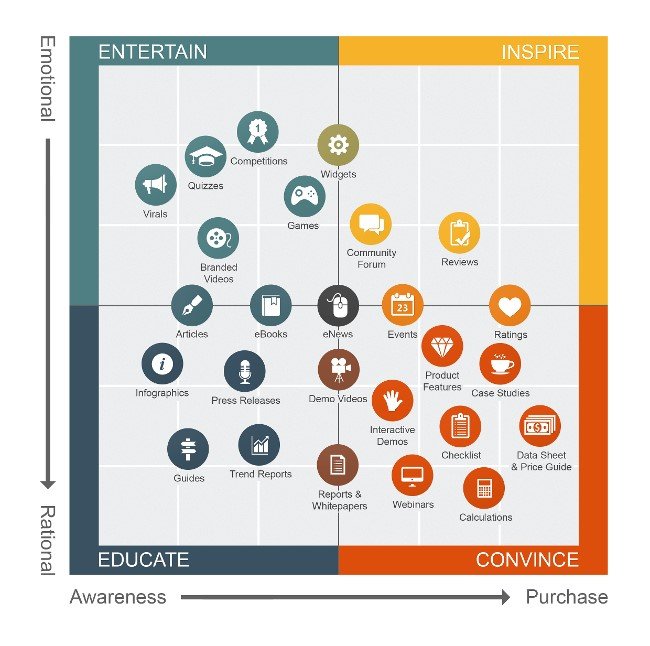The year is 2024, and the digital landscape is fiercer than ever. Attention spans are shrinking, algorithms are evolving, and the competition for eyeballs is at an all-time high. So, how do you, as a brand, cut through the noise and establish yourself as a leader in your field? The answer lies in a winning content strategy.
Now, this isn’t just about churning out blog posts and social media updates. It’s about understanding your audience, creating compelling content that resonates, and strategically distributing it across the channels they frequent. It’s about building trust, nurturing relationships, and ultimately, driving business growth.
Content marketing in itself is a powerful way to attract, engage, and convert your target audience. It can help you establish your brand identity, build trust and credibility, and drive more traffic and leads to your website. However, content marketing is not a one-time effort; it requires a strategic and consistent approach to create and distribute valuable and relevant content that meets your audience’s needs and expectations.
To succeed in content marketing, you need a content blueprint: a plan that outlines your goals, audience, content types, channels, and metrics. In this article, we will show you how to craft your content blueprint for 2024 and share some tips and best practices to make your content marketing more effective and efficient.
Step 1: Define your content marketing goals
The first step in crafting your content blueprint is to define your content marketing goals. What do you want to achieve with your content? How does it support your overall business goals? Some common content marketing goals are:
- Increase brand awareness and visibility
- Generate more traffic and leads
- Nurture and convert prospects into customers
- Retain and delight existing customers
- Establish thought leadership and authority
- Build trust and loyalty
- Educate and inform your audience
Your content marketing goals should be SMART: specific, measurable, achievable, relevant, and time-bound. For example, instead of saying “I want to increase traffic to my website”, you can say “I want to increase organic traffic to my website by 20% in the next six months”.
Step 2: Identify your target audience
The next step in crafting your content blueprint is to identify your target audience. Who are you creating content for? What are their pain points, challenges, needs, and interests? How can you help them solve their problems or achieve their goals?
To answer these questions, you need to create buyer personas: semi-fictional representations of your ideal customers based on data and research. Buyer personas can help you understand your audience’s demographics, behaviors, motivations, and preferences, and tailor your content accordingly.
You can create buyer personas by conducting surveys, interviews, and focus groups with your existing and potential customers, as well as analyzing your website and social media analytics, customer feedback, and industry trends. You can use tools like HubSpot’s Make My Persona or Xtensio’s User Persona Creator to create and visualize your buyer personas.
Step 3: Choose your content types and formats
The third step in crafting your content blueprint is to choose your content types and formats. What kind of content will you create to reach, engage, and convert your audience? How will you present your content in a way that appeals to your audience and matches your goals?
There are many types and formats of content that you can use in your content marketing strategy, such as:
- Blog posts
- E-books
- White papers
- Case studies
- Infographics
- Videos
- Podcasts
- Webinars
- Social media posts
- Newsletters
- Quizzes
- Checklists
- Guides
- Templates, etc.
The type and format of content that you choose depends on your audience’s preferences, your content goals, and your resources. You can use a content matrix to map your content types and formats to your buyer personas and their stages in the buyer’s journey (awareness, consideration, decision, retention).

For example, if your goal is to generate awareness and attract new visitors to your website, you can use blog posts, infographics, videos, and social media posts to educate and entertain your audience. If your goal is to nurture and convert leads into customers, you can use e-books, white papers, case studies, and webinars to demonstrate your value proposition and expertise. If your goal is to retain and delight customers, you can use newsletters, quizzes, checklists, and guides to provide ongoing support and value.
Step 4: Select your content channels and platforms
The fourth step in crafting your content blueprint is to select your content channels and platforms. Where will you distribute and promote your content to reach your audience and drive them to your website? How will you optimize your content for each channel and platform?
There are many channels and platforms that you can use to distribute and promote your content, such as:
- Your website and blog
- Email marketing
- Social media platforms (Facebook, X, Instagram, LinkedIn, YouTube, etc.)
- Search engines (Google, Bing, etc.)
- Online communities and forums (Reddit, Quora, Medium, etc.)
- Content syndication and guest posting sites (Business 2 Community, Forbes, etc.)
- Influencer marketing and partnerships
- Paid advertising and sponsored content, etc.
The channels and platforms that you choose depend on your audience’s behavior, your content goals, and your budget. You can use a content distribution matrix to map your content channels and platforms to your buyer personas and their stages in the buyer’s journey.
For example, if your goal is to generate awareness and attract new visitors to your website, you can use search engine optimization (SEO), social media marketing, content syndication, and influencer marketing to increase your content’s reach and visibility. If your goal is to nurture and convert leads into customers, you can use email marketing, paid advertising, and webinars to drive your audience to your landing pages and offers. If your goal is to retain and delight customers, you can use email marketing, social media marketing, and online communities to maintain your relationship and loyalty.
Step 5: Define your content marketing metrics and KPIs
The fifth and final step in crafting your content blueprint is to define your content metrics and KPIs. How will you measure and evaluate your content’s performance and impact? How will you track and report your content marketing results and ROI?
There are many metrics and KPIs that you can use to measure and evaluate your content marketing, such as:
- Traffic: the number of visitors to your website or blog
- Engagement: the number of likes, comments, shares, and views of your content
- Leads: the number of people who sign up for your email list, download your e-book, register for your webinar, etc.
- Conversion: the number of people who take a desired action, such as making a purchase, booking a demo, requesting a quote, etc.
- Retention: the number of people who remain loyal and repeat customers
- Revenue: the amount of money that you generate from your content marketing efforts
- ROI: the ratio of your revenue to your costs for your content marketing efforts, etc.
Your content metrics and KPIs should be aligned with your content goals and your business objectives. You can use a content measurement matrix to map your content metrics and KPIs to your buyer personas and their stages in the buyer’s journey.
For example, if your goal is to generate awareness and attract new visitors to your website, you can use traffic, engagement, and SEO metrics (such as impressions, clicks, rankings, etc.) to measure your content’s performance. If your goal is to nurture and convert leads into customers, you can use leads, conversion, and revenue metrics (such as cost per lead, conversion rate, customer lifetime value, etc.) to measure your content’s impact. If your goal is to retain and delight customers, you can use retention, revenue, and ROI metrics (such as retention rate, churn rate, customer satisfaction, etc.) to measure your content’s value.
Bonus Tip
Repurpose and recycle content: Extract valuable insights from existing content to create new formats and reach new audiences.
Remember, content marketing is a marathon, not a sprint. By following these steps and consistently creating high-quality content that resonates with your audience, you’ll build a winning content blueprint that propels your brand to success in 2024 and beyond.
Conclusion
Content marketing is a powerful way to attract, engage, and convert your target audience. But to succeed in content marketing, you need a content blueprint: a plan that outlines your goals, audience, content types, channels, and metrics. A content blueprint can help you align your content with your business objectives, optimize your content for search engines and social media, and measure your content performance and impact.
We hope this article has helped you craft your content blueprint for 2024. If you need any help with your content marketing strategy, feel free to contact us. We are a team of content marketing experts who can help you create and distribute valuable and relevant content that meets your audience’s needs and expectations. Let’s work together to make your content marketing a success!



